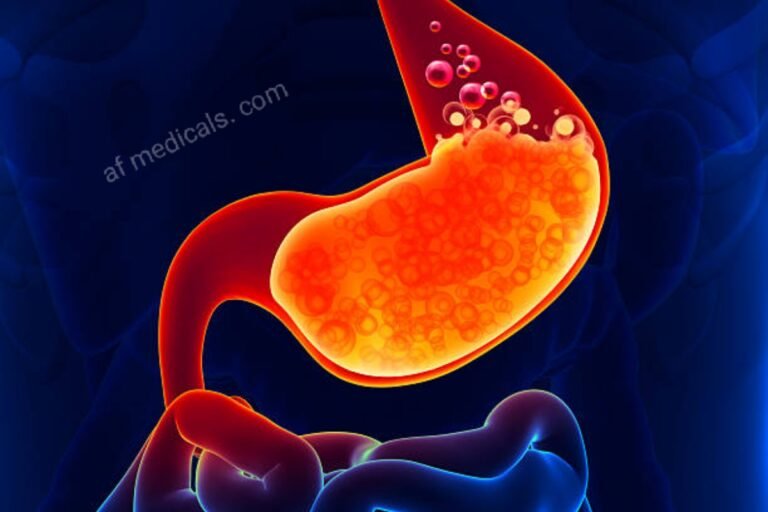Preface to Gastric Neuroendocrine Tumors:
Preface to Gastric Neuroendocrine Tumors:
Introduction:
- Sketch of Gastric Neuroendocrine Tumors
- Indication and Incidents
Gastric NETs describe a unique spectrum of tumors appearing from enterochromaffin-like (ECL) cells in the stomach interlining. These tumors are placed on their pathogenesis and clinical behavior reproducing a different prognosis and treatment strategy spectrum.
Classification and Pathogenesis:
Gastric NETs are categorized into three main types each with distinct pathogenic mechanisms. Type I the most common arises from chronic atrophic gastritis leading to hypergastrinemia. Type II is associated with Zollinger-Ellison syndrome and gastrinoma often within the Multiple Endocrine Neoplasia type 1 (MEN1) syndrome. Type III the least common but most aggressive develops sporadically and is not related to gastrin levels.
Clinical Presentation:
The symptoms of gastric NETs can range from general gastrointestinal objections to more severe signs like gastrointestinal bleeding basing on the tumor type and size. Type III tumors due to the ambitious nature are more likely to present with significant symptoms.
Diagnostic Approaches:
The determination of gastric NETs includes a blend of endoscopic, histological and biochemical strategies. Endoscopy with biopsy is fundamental for picturing the growths and getting tissue tests while biochemical markers like chromogranin An and gastrin levels can uphold the determination.
Treatment Options:
Treatment techniques are customized by the kind size and phase of the cancer. Endoscopic resection is frequently utilized for little limited Type I and II growths while careful resection is expected for bigger or metastatic cancers. Type III growths might require chemotherapy or designated treatment notwithstanding medical procedure.
Advances in Treatment:
Late years have seen critical advances in the treatment of gastric NETs with the improvement of designated treatments and immunotherapy offering new expectation for patients, particularly those with cutting edge sickness. Specific molecular targets or pathways involved in tumor growth and spread are the focus of these treatments.
Nutritional and Lifestyle Considerations:
Arising proof recommends that dietary and way of life changes can assume a part in overseeing side effects and working on the personal satisfaction for patients with gastric NETs. Custom fitted wholesome guidance and backing can assist with dealing with the impacts of chemical hypersecretion and treatment secondary effects.

The Importance of a Multidisciplinary Approach:
A multidisciplinary approach to treatment involving specialists in gastroenterology, surgery, oncology, radiology, and supportive care is required due to the complexity of gastric NETs. This cooperative exertion guarantees extensive administration custom-made to individual patient requirements.
Future Directions in Research:
Continuous exploration is centered around revealing the sub-atomic underpinnings of gastric NETs distinguishing novel remedial targets and working on indicative methods. Clinical preliminaries are investigating the viability of new medications and treatment blends intending to improve results and personal satisfaction for patients.
To grow the construction and detail of your article named “Prologue to Gastric Neuroendocrine Cancers” you might consider adding the accompanying headings and subheadings to additional upgrade the breadth and profundity of the substance:
Classification and Pathogenesis:
- Overview of Gastric NET Classifications
- Pathogenic Mechanisms of Each Type
Clinical Presentation:
- Common Symptoms and Signs
- Differences in Presentation Among Types
Diagnostic Approaches:
- Initial Diagnostic Steps
- Endoscopic Techniques and Findings
- Role of Histological and Biochemical Markers
- Importance of Imaging in Diagnosis
Treatment Options:
- Endoscopic Resection Techniques
- Surgical Interventions
- Pharmacological Therapies
- Role of Chemotherapy and Targeted Therapy
- Innovations in Treatment Approaches
Advances in Treatment:
- Targeted Therapies and Their Mechanisms
- Immunotherapy Options
- Recent Clinical Trial Findings
Nutritional and Lifestyle Considerations:
- Dietary Management of Symptoms
- Lifestyle Modifications for Quality of Life Improvement
The Importance of a Multidisciplinary Approach:
- Roles of Various Specialists
- Benefits of Collaborative Care
Future Directions in Research:
- Emerging Therapeutic Targets
- Advances in Diagnostic Technologies
- Ongoing and Upcoming Clinical Trials
Patient Support and Advocacy:
- Support Groups and Resources
- Navigating Treatment Decisions and Care
References:
- Key Literature and Further Reading
This construction not just covers the clinical and logical parts of gastric NETs yet additionally consolidates patient consideration and backing, mirroring a comprehensive perspective on the condition’s administration.

Conclusion:
Gastric neuroendocrine cancers envelop many circumstances with fluctuating introductions, therapies and guesses. For accurate diagnosis and treatment, it is essential to comprehend these tumors’ classification, pathogenesis, and clinical features. Propels in examination and treatment combined with a multidisciplinary way to deal with patient consideration are working on the standpoint for people determined to have these mind boggling growths.
This construction gives a complete outline of gastric NETs consolidating late progressions in finding and treatment and underlining the significance of continuous exploration and multidisciplinary care in dealing with this condition.







